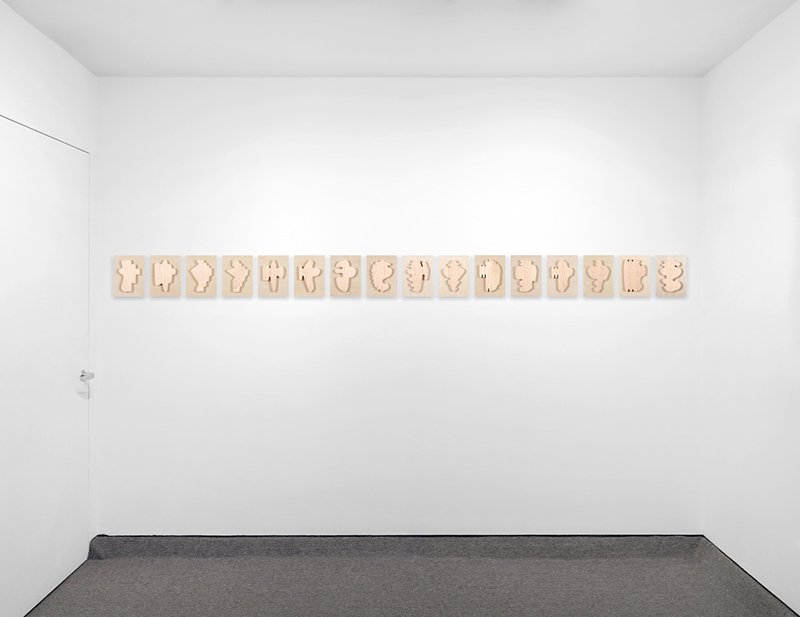

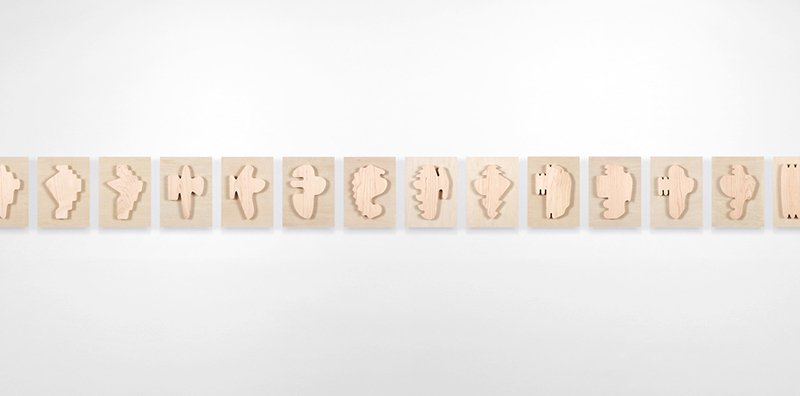
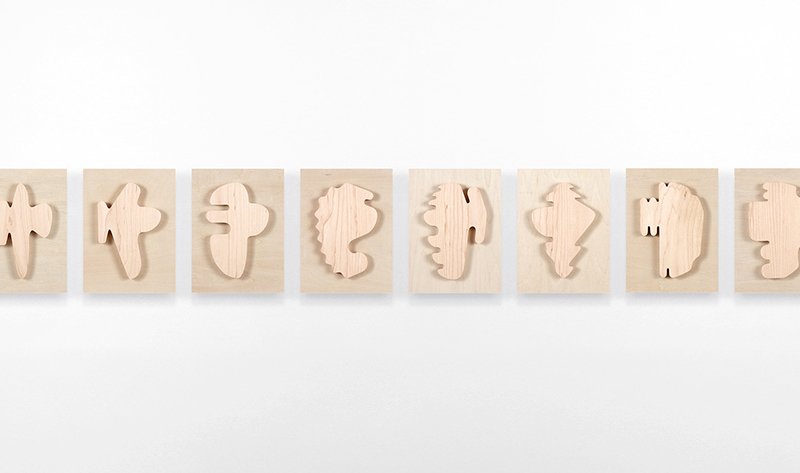
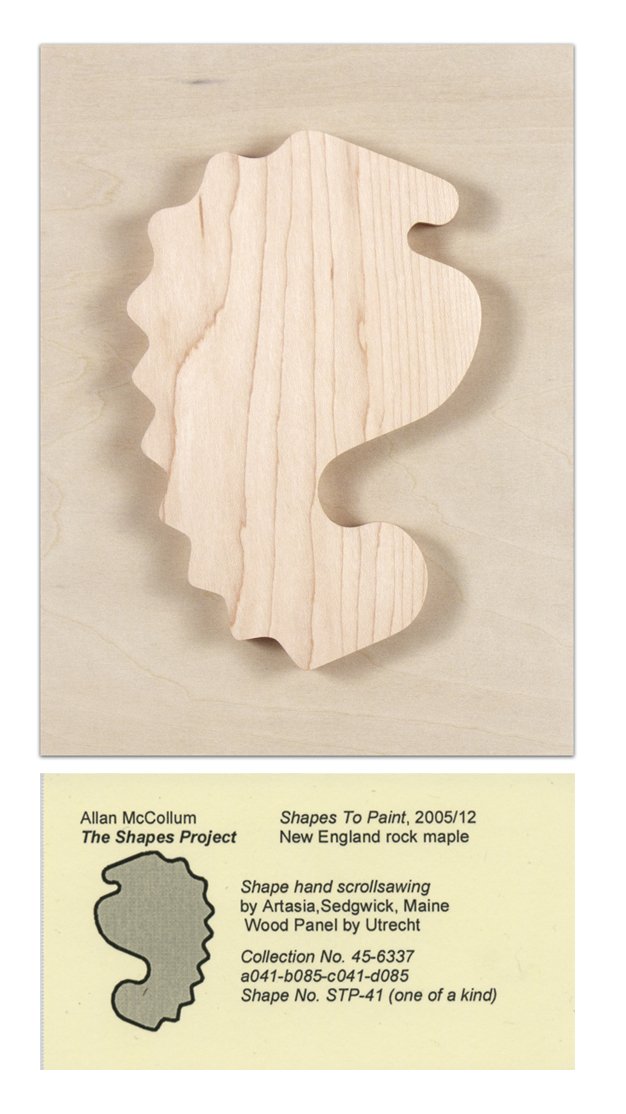
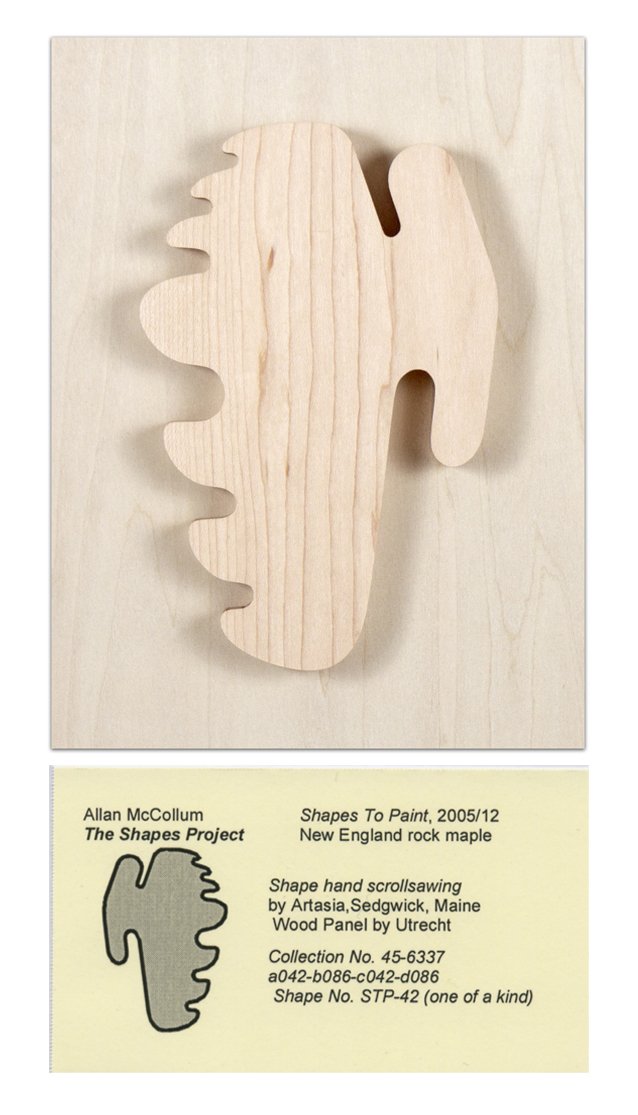
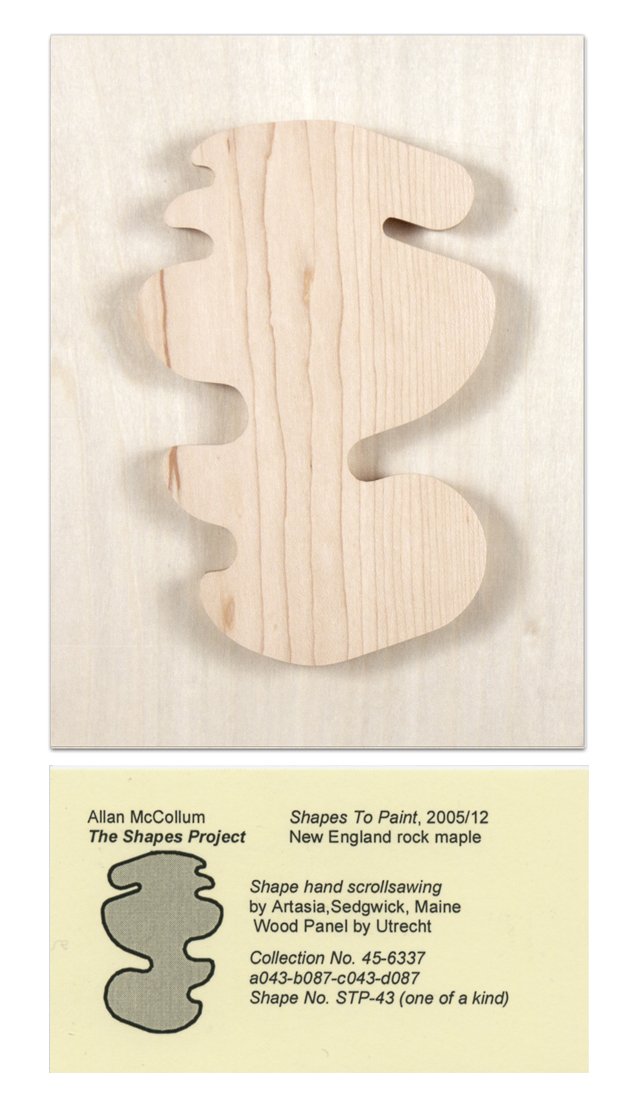
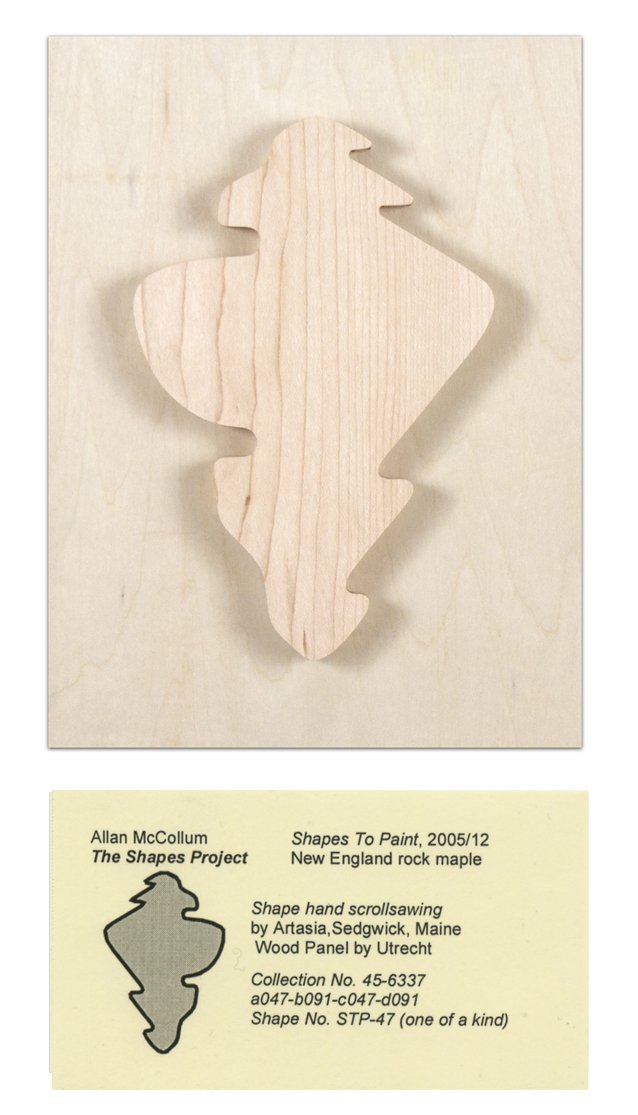
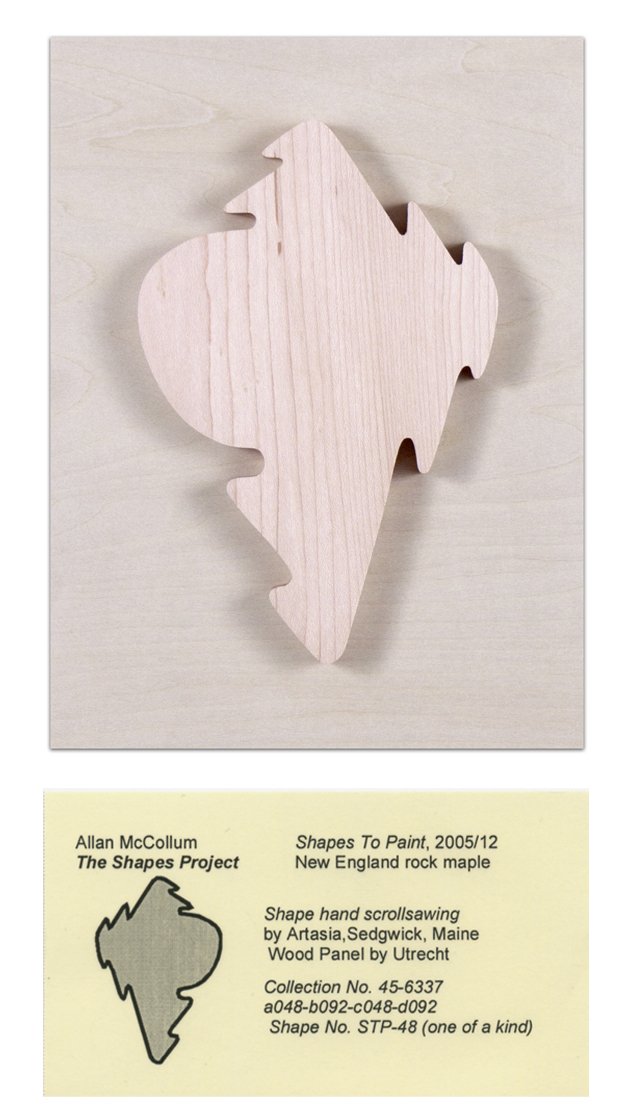
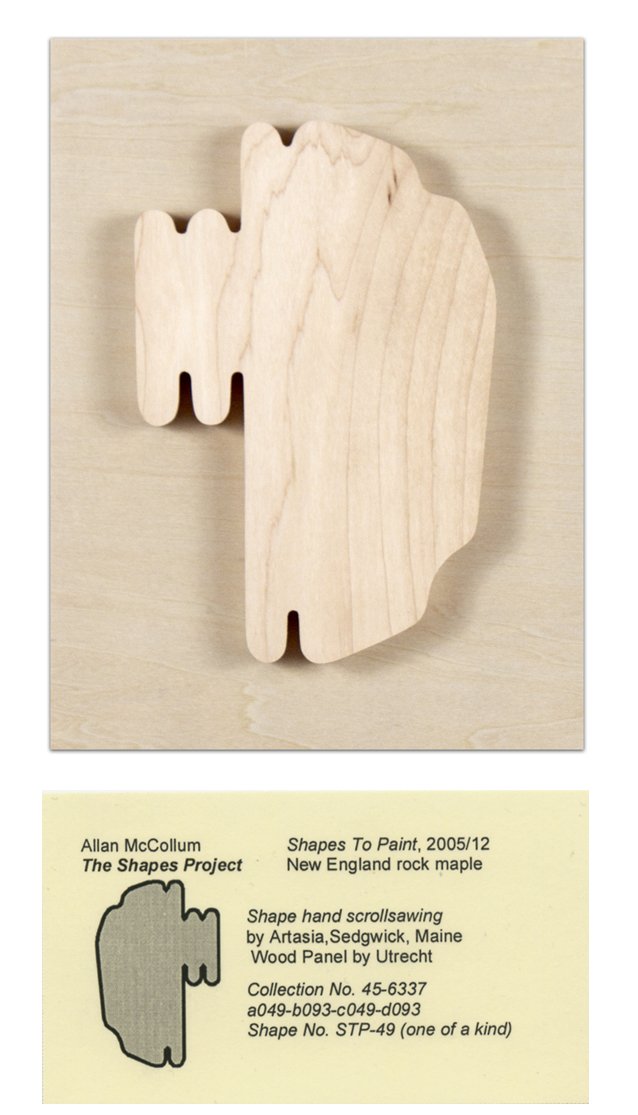
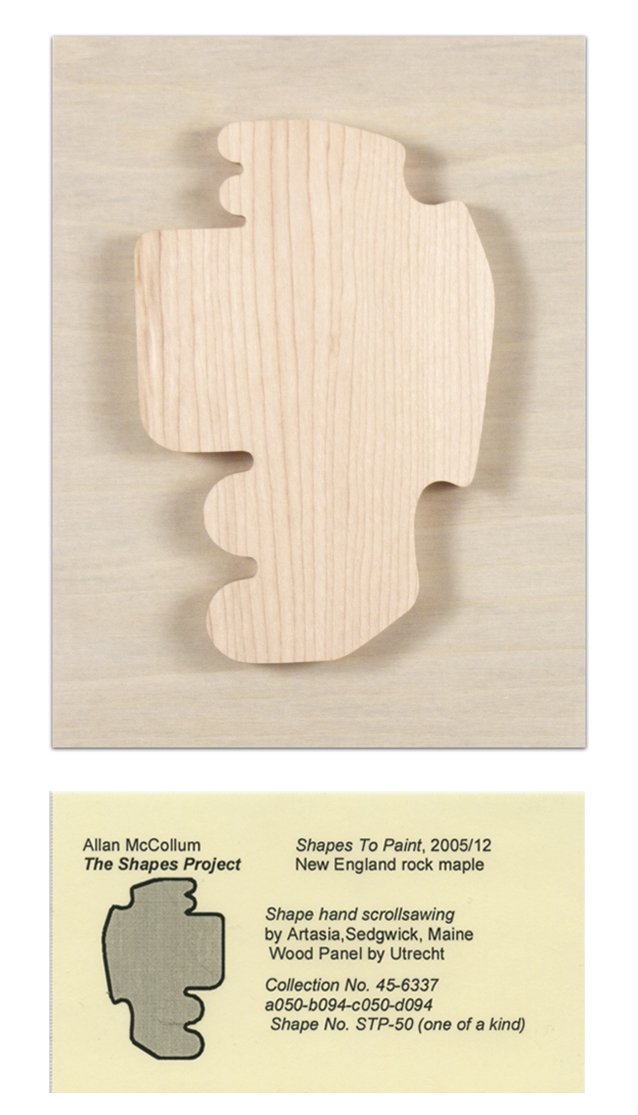
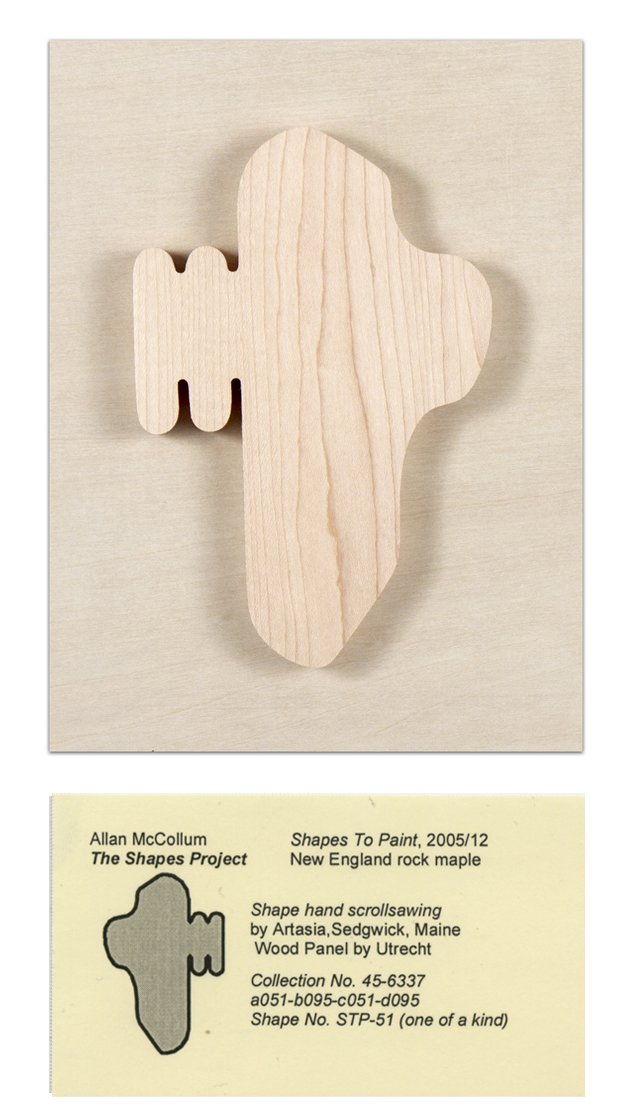
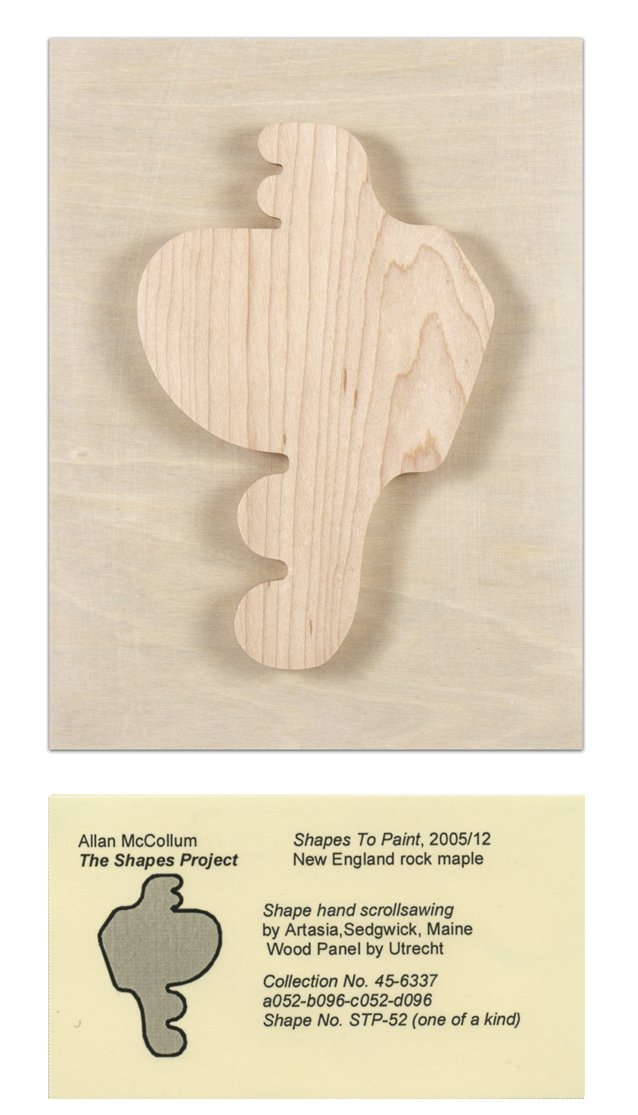
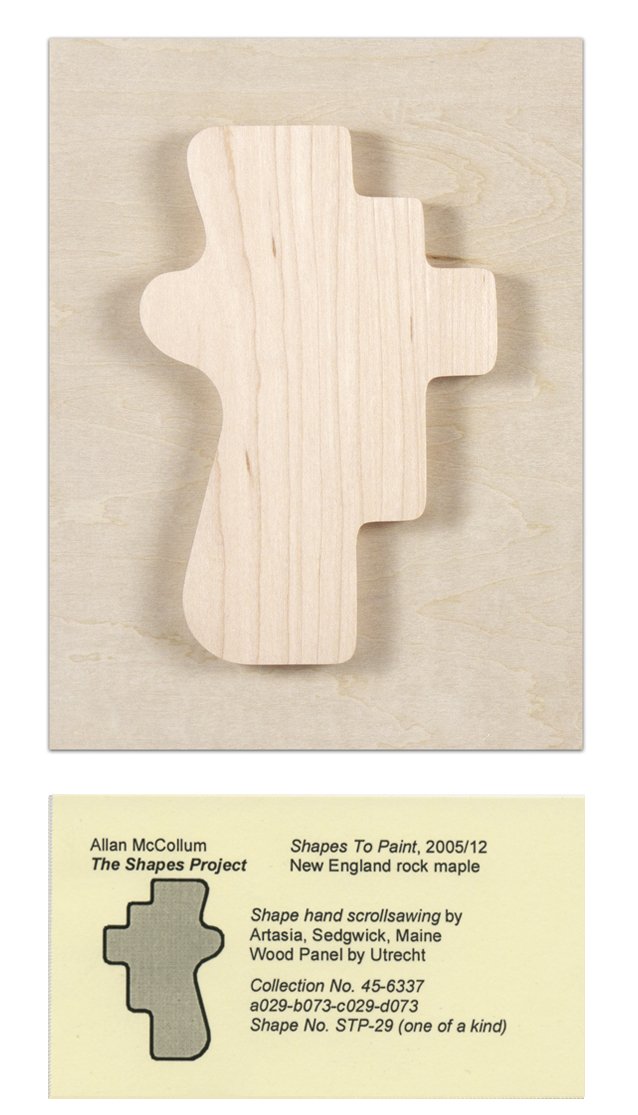
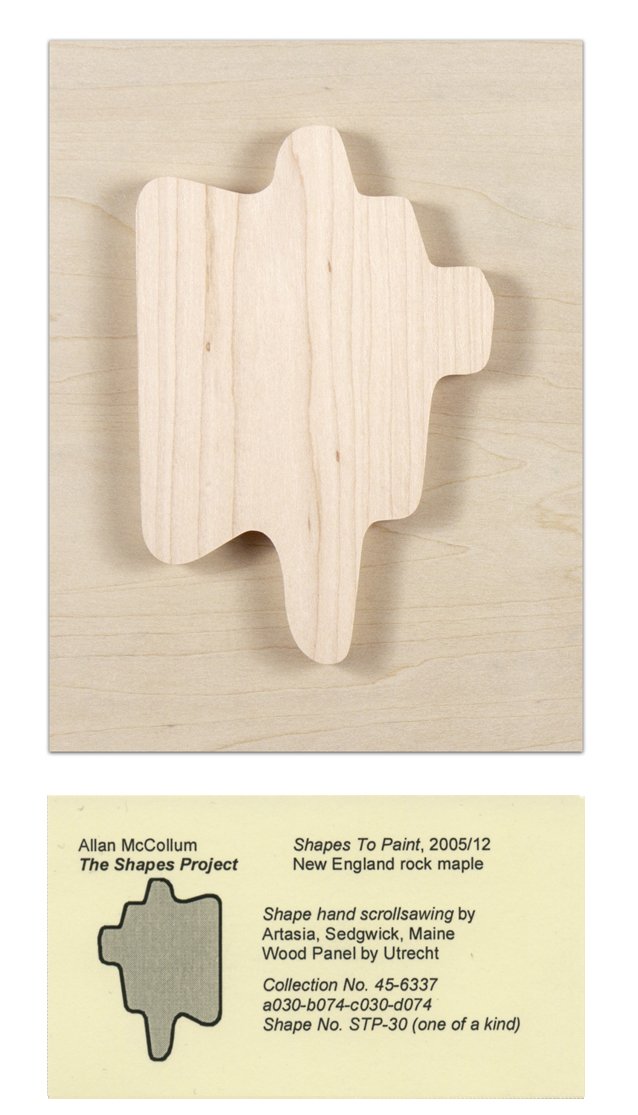
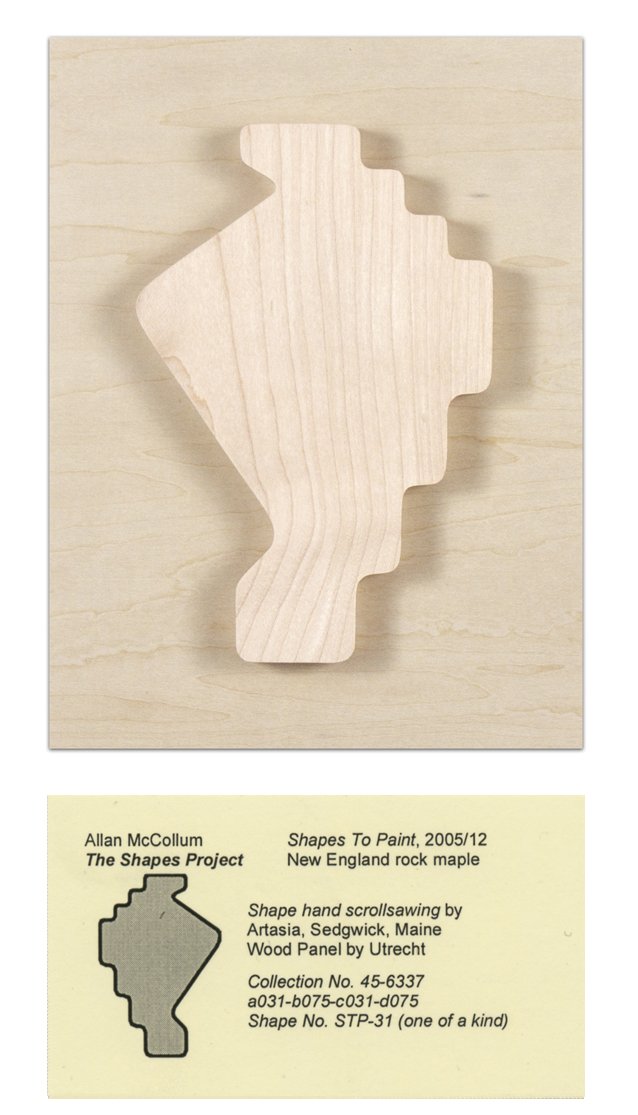
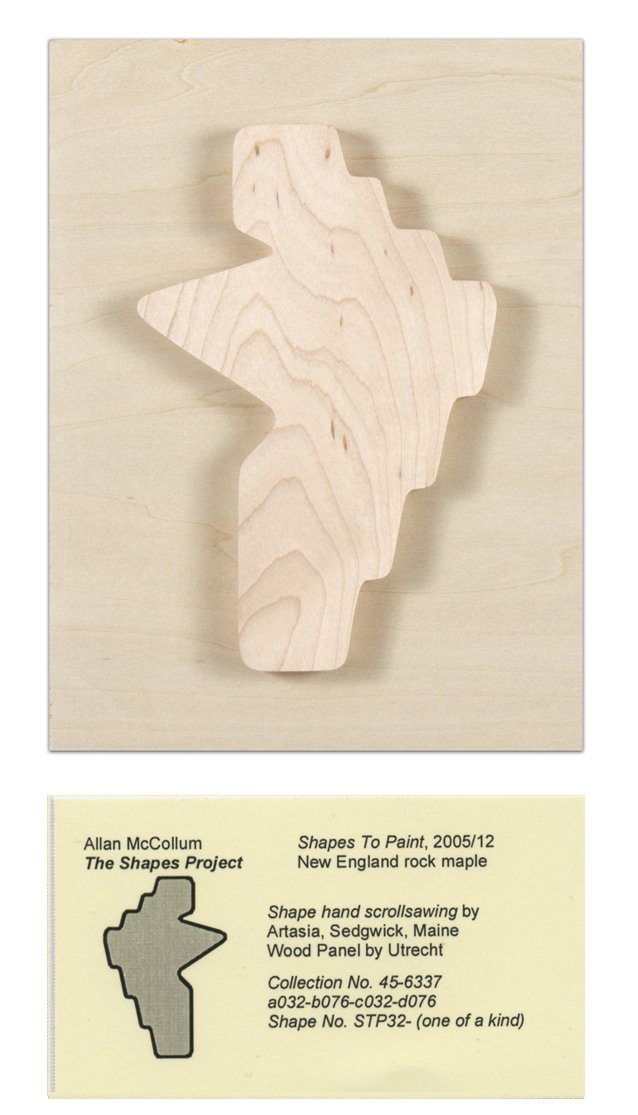
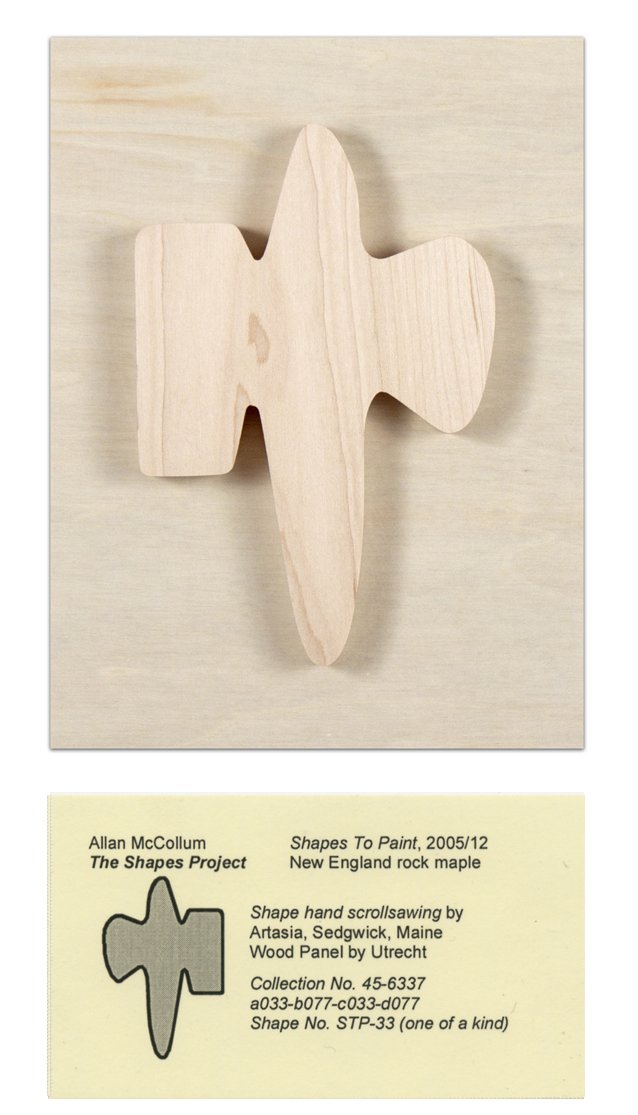
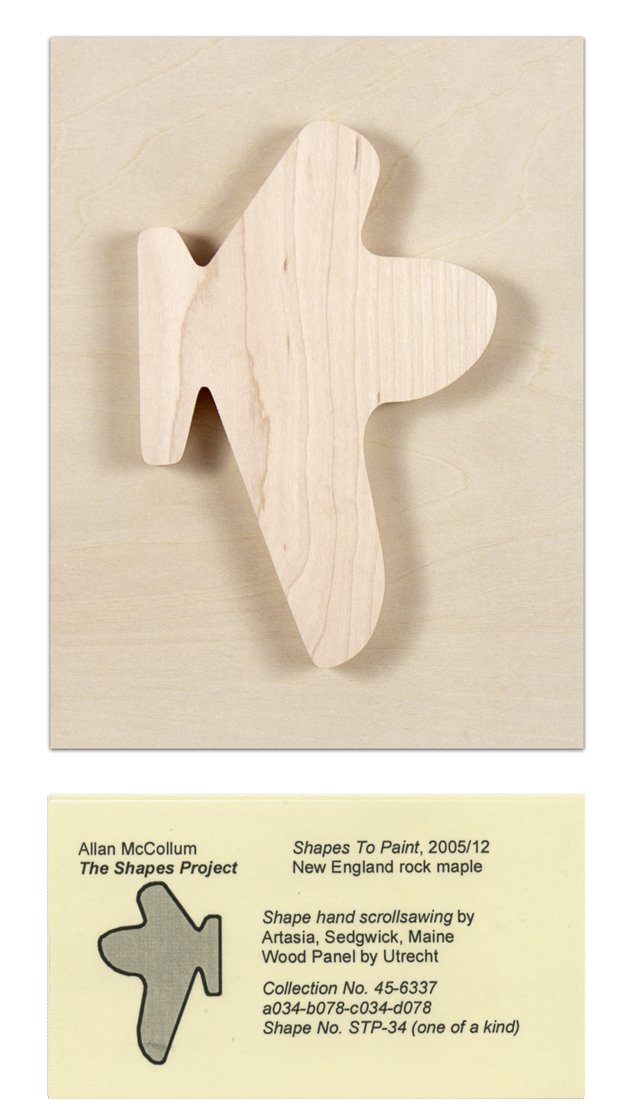
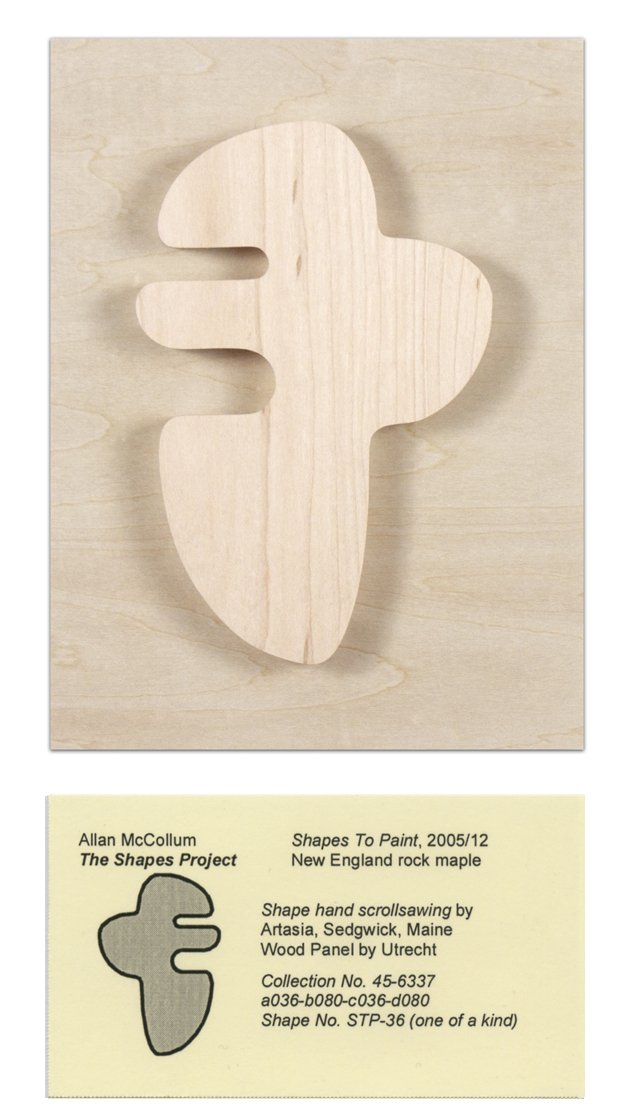
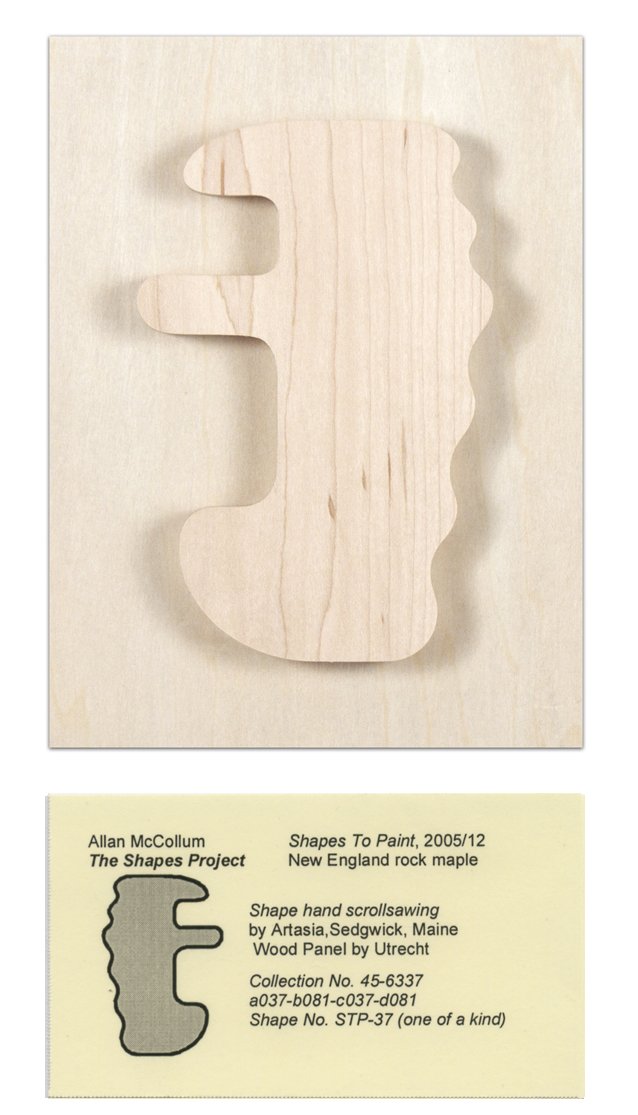
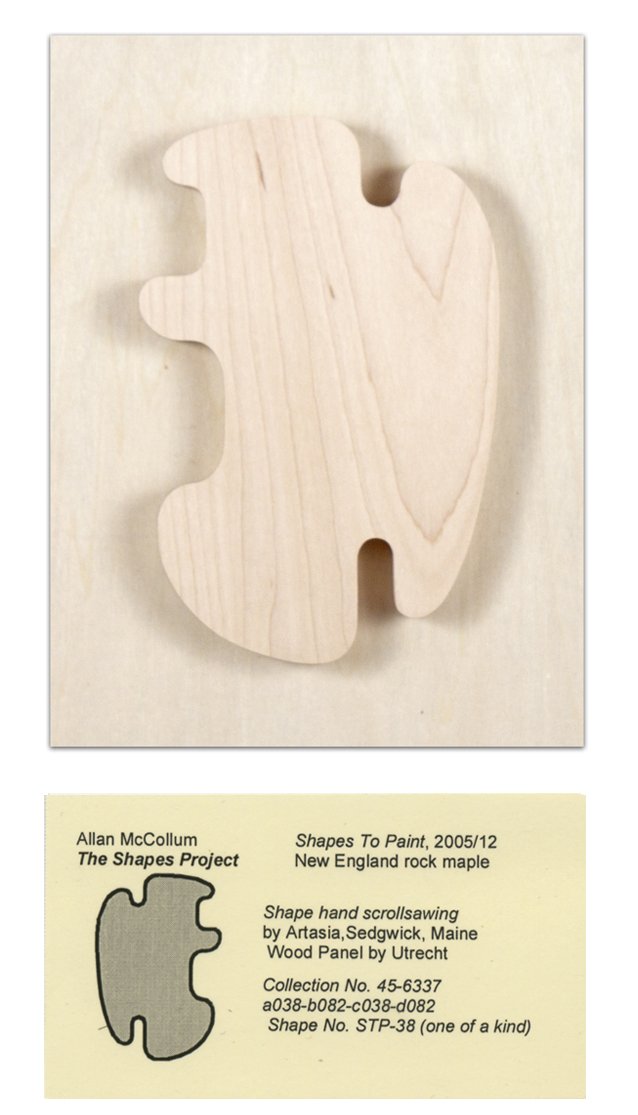
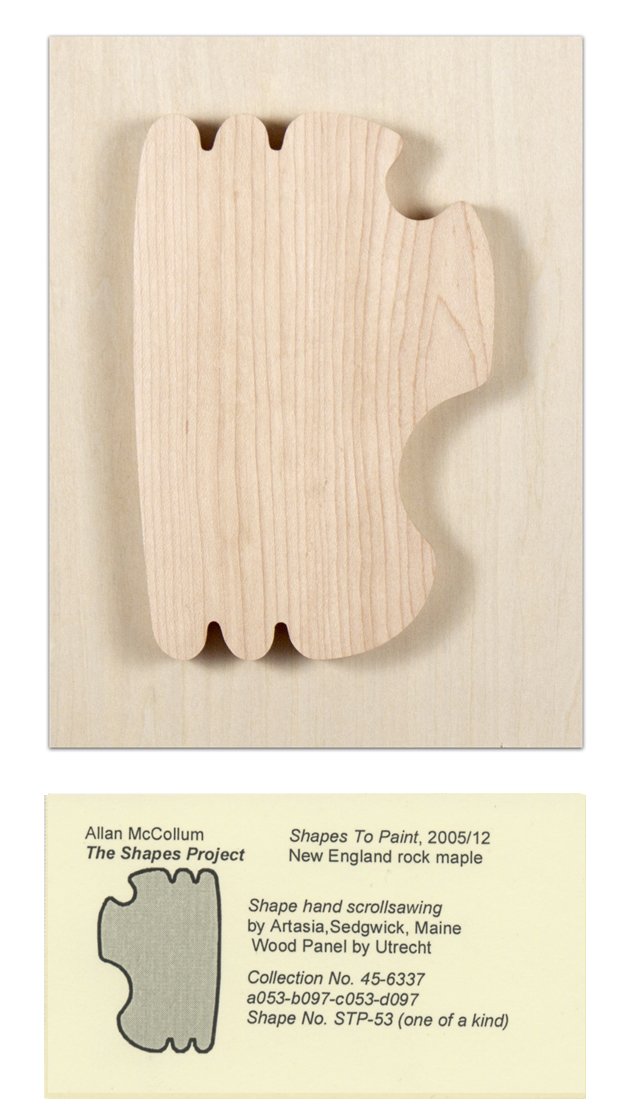
We are happy to report that all “Shapes to Paint” have sold. We are thrilled with such a positive response and thank you for supporting such a great cause !
For a $250 donation to Boston’s Artists for Humanity, you can purchase one of McCollum’s “Shapes to Paint”. Each “Shape” comes with a label card and unique identification number. They are purposefully left unpainted so that the owner can paint it how they see fit.
The artist originally made them as a benefit for Artists For Humanity at the time of his 2012 exhibition at Krakow Witkin Gallery which can be viewed here. Allan McCollum: The Shapes Project: Perfect Couples
We are happy to report that all “Shapes to Paint” have sold. We are thrilled with such a positive response and thank you for supporting such a great cause !
For a $250 donation to Boston’s Artists for Humanity, you can purchase one of McCollum’s “Shapes to Paint”. Each “Shape” comes with a label card and unique identification number. They are purposefully left unpainted so that the owner can paint it how they see fit.
The artist originally made them as a benefit for Artists For Humanity at the time of his 2012 exhibition at Krakow Witkin Gallery which can be viewed here. Allan McCollum: The Shapes Project: Perfect Couples
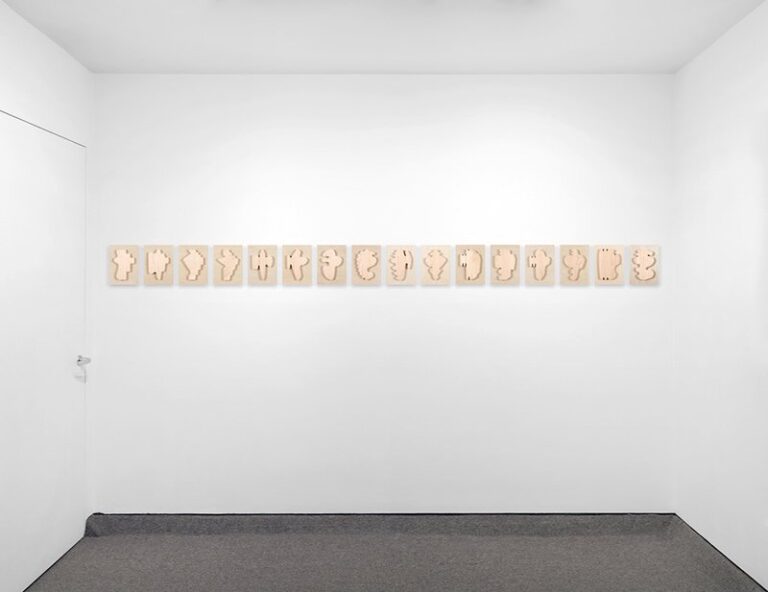
To help understand where these works comes from, it may be useful to know that McCollum has designed a system to produce unique “shapes.” This system allows him to make enough unique shapes for every person on the planet to have one of their own. It also allows him to keep track of the shapes, so as to insure that no two will ever be alike. Previous parts of the project have been monoprints, embroideries and rubber stamps.
McCollum’s reasoning for the quantity of shapes comes from following the present rate of birth. It is generally estimated that the world population will “peak” sometime during the middle of the present century, and then possibly begin to decline. How many people will be alive at this peak are estimated at between 8 billion and 20 billion people, depending upon what factors are considered and who is doing the considering. The most recent estimate published by the United Nations puts the figure at around 9.1 billion in the year 2050. To make certain that his system will be able to accommodate everyone, McCollum has organized it to produce over 31,000,000,000 different shapes, which is more than the highest population estimates might require. For the time being, a potential of around 214,000,000 shapes have been reserved within the system for creative experimentation. These can be used for many different purposes, not only for fine art and design projects, but also for various social practices: as gifts, awards, identity markers, emblems, insignias, logos, toys, souvenirs, educational tools, and so forth.
McCollum is presently using a home computer to construct Adobe Illustrator ‘vector’ files that allow the shapes to be produced in many possible ways. The shapes can be printed graphically as silhouettes or outlines, in any size, color or texture, using all varieties of graphics software; or, the files can be used by rapid prototyping machines and computer-numerically-controlled (CNC) equipment such as routers, laser and waterjet cutters to build, carve, or cut the shapes from wood, plastic, metal, stone, and other materials. For the “Shapes to Paint”, all the shapes were cut by hand on a scroll saw by Horace and Noella Varnum, founders of Artasia, in Sedgwick, Maine.
To see which “Shapes” are available, click on “view additional images” and scroll through the available “Shapes to Paint”.
Allan McCollum was born in 1944 in Los Angeles. In 1946, his family moved to Redondo Beach, California, where he lived until 1966. He briefly studied restaurant management and industrial kitchen work at Los Angeles Trade Technical College, but decided to educate himself as an artist in 1967. In lieu of formal art education, he read the writings of artists of the international Fluxus movement, and of conceptual artists including Daniel Buren and Sol LeWitt. He also began working as a truck driver and crate builder for an art handling company in West Hollywood and learned about the mechanisms of the contemporary art world through meeting artists, art dealers, collectors, and curators. Establishing his first studio in in the late 1960’s, McCollum soon began exhibiting work in Nicholas Wilder Gallery and Claire Copley Gallery, both in Los Angeles.
He moved to New York in 1975, settling in the SoHo neighborhood. Early on, his work focused on the intersection of mass production and the uniqueness, both material and conceptual, of the art object. His series Over Ten Thousand Individual Works (1987-88), exhibited in 1988 at John Weber Gallery, New York, comprised rows of miniature objects, each one cast separately from a unique combination of found household items, such as bottle caps and kitchen tools. McCollum repeated this process in 1989 in a series of a few thousand drawings, each one created using a unique combination of hundreds of plastic drafting templates that he had made according to a systemic, non-repetitive process. McCollum’s interest in the mass production of images and objects, and in layers of uniqueness and difference, led him to mass media as a source. In his Perpetual Photo series (1982-89), he photographed television stills, obscuring his source material through cropping and enlargement, creating a visually frustrating hybrid of copy and original.
In a recent work, The Shapes Project (2005), McCollum created a system to generate billions of similar but non-repeating shapes from combinations of 300 “parts,” ostensibly to provide one “for every person on the planet.” Since then, he has used his shapes system to produce both prints and sculptures in Plexiglas, Corian, plywood, hardwood, metal, and other materials. In his 2010 publication The Book of Shapes, McCollum further explored his interest in combining conceptual and material accessibility with theoretical ideas on the “uniqueness” of the art object. The publication provides both the 300 basic shape parts and instruction for generating all possible combinations of those parts.
McCollum has been the subject of over 100 solo exhibitions at institutions including Artists Space, New York (1979-80); Portikus, Frankfurt (1988); Van Abbemuseum, Eindhoven, Netherlands (1989); Denver Art Museum (1990); Musée d’art moderne de Lille Métropole, Villeneuve d’Ascq, France (1998); Musée d’art moderne et contemporain, Geneva (2006); and Institute of Contemporary Art in Miami (2020). His work was included in Aperto at the 1988 Venice Biennale and in the Sao Paulo Biennial (2008). McCollum has produced numerous public art projects in the United States and Europe. He lives and works in New York.
—Text edited from the Guggenheim Museum, New York, New York
10 Newbury Street, Boston, Massachusetts 02116
617-262-4490 | info@krakowwitkingallery.com
The gallery is free and open to the public Tuesday – Saturday, 10am – 5:30pm